“Did you enjoy Diwali?” the young computer-science student sitting across from me on the train asked. She was beaming.
Hey kid, I thought to myself. I’d never heard of Diwali five years ago. “Oh yes, it was great!” I lied. It would have been impolite to say, “Bah. Humbug.”
Last summer when I realized Steve and I would be in Jaipur, the capital of Rajasthan, for Diwali, I was excited. By then I’d learned that Diwali is the ancient Hindu festival of light. It unfolds late every fall, timed with the phases of the moon. Two years ago around Diwali time, we happened to be in Singapore, which has a large ethnic Indian population. The lights in the Indian part of town dazzled us then, and I imagined it would be even cooler to experience Diwali in India itself.
As with Christmas, preparations for Diwali start weeks ahead of the climactic day. People clean and paint their houses; women shop for new outfits. As in the run-up to the American holiday, homes and businesses are adorned with colored lights. Folks stock up on weird-looking sweets…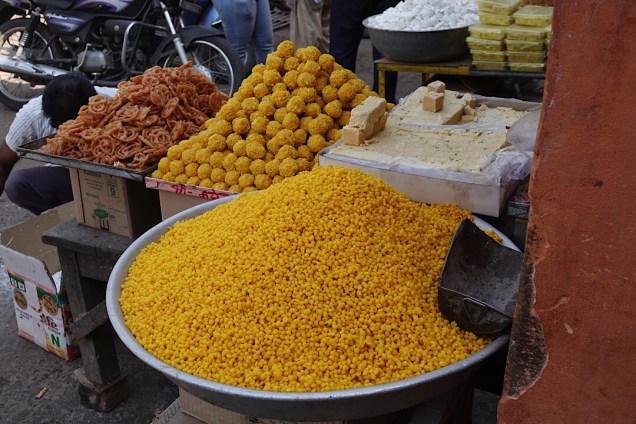 like these…
like these… and these.
and these.
Steve and I walked into Jaipur’s Old City on the night of November 7. We entered through this gate and saw ladies in their new finery making offerings to various gods.
We entered through this gate and saw ladies in their new finery making offerings to various gods.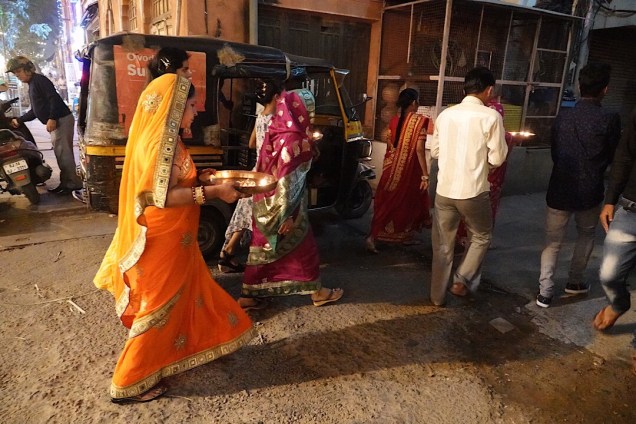 So many men and women and children were out to view the decorations and buy desserts, the honking of taxis and tuk-tuks made it hard to hear the Diwali music blaring over loudspeakers.
So many men and women and children were out to view the decorations and buy desserts, the honking of taxis and tuk-tuks made it hard to hear the Diwali music blaring over loudspeakers.
Steve was charmed by the fact that humans on opposite sides of the globe came up with such similar celebrations around the same time of year. I agree, and I also thought some of the lights were impressive… like this street.
like this street. This was more the norm, though.
This was more the norm, though.
What made me less of a Diwali fan is the holiday’s other essential element: loud explosions. Some of these resulted from the setting off of fireworks. I like fireworks, and I don’t mind the noise they produce. But I dislike firecrackers — the sort that make you jump and wonder if someone hasn’t just exploded an actual bomb. Or a series of them! Cannon fire. Hand grenades. These are some of the comparisons we made as the explosions walloped our ears not just Wednesday night, but also Thursday and Friday. Besides the noise, the firecrackers produce so much smoke it contributes to northern India’s hellish air pollution, according to an online article I read. (Another huge factor is farmers burning their spent crops to prepare for the next planting.)
Whatever the exact cause, by Thursday morning, my iPhone was reporting that the air pollution level in Jaipur was beyond Unhealthy, beyond Very Unhealthy. It had reached the red zone of Hazardous (somewhere in the mid-500s. To put that in perspective, I think it was 50 in San Diego that morning). This was the sight that greeted us as we walked outside our guesthouse that morning. Not smoky enough for you? Burn some garbage!
Not smoky enough for you? Burn some garbage!
We spent Friday being driven around for the day (for $21), and at one point, gazing at the beautiful ruin of a palace in the middle of a lake, I asked our driver/guide if the pollution was less bad at certain times of the year. He looked offended. “That is fog, madam!” he declared. “Not pollution!” He told me whenever he went to Delhi, the air was so bad it hurt his lungs to breathe it. But the Jaipur air didn’t do that. It was harmless fog, caused by the cold winds from the Himalayas blowing south.
Through the haze (whatever its cause), terra-cotta-colored Jaipur does offer a lot to see. The current maharajah, just 20, still lives in the palace at the heart of the city.
The current maharajah, just 20, still lives in the palace at the heart of the city.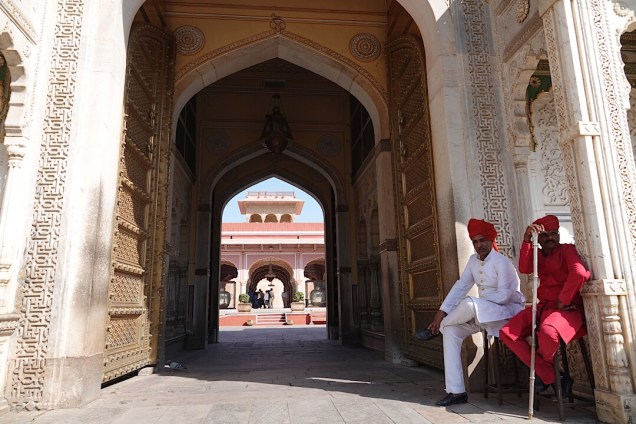
 That’s him, with the sword, surrounded by his grandmother, mom, and siblings.
That’s him, with the sword, surrounded by his grandmother, mom, and siblings.
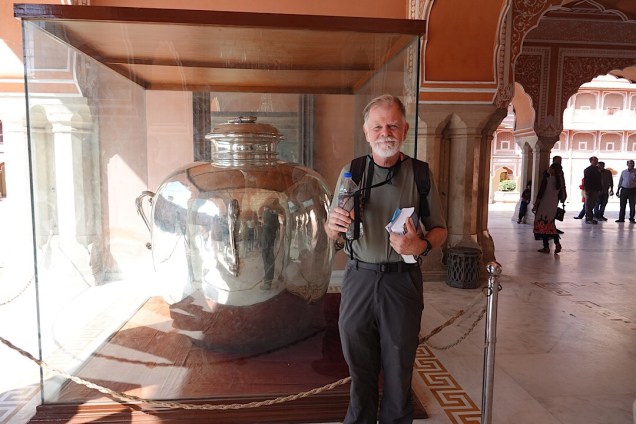 The palace is filled with interesting objects, such as this giant silver vessel. One of the maharajahs had it filled with water from the Ganges, for him to drink on a trip to London. (Note that Steve prefers to travel lighter.)
The palace is filled with interesting objects, such as this giant silver vessel. One of the maharajahs had it filled with water from the Ganges, for him to drink on a trip to London. (Note that Steve prefers to travel lighter.)
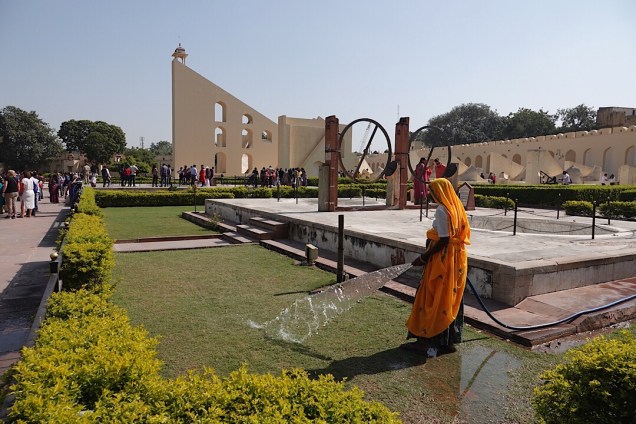
The founder of Jaipur, Jai Singh II, was also a passionate astronomer. The observatory he built in the Old City, starting in 1728, is filled with sundials and other enormous instruments. He also started construction of the so-called Amber Fort, both monumental and beautiful.
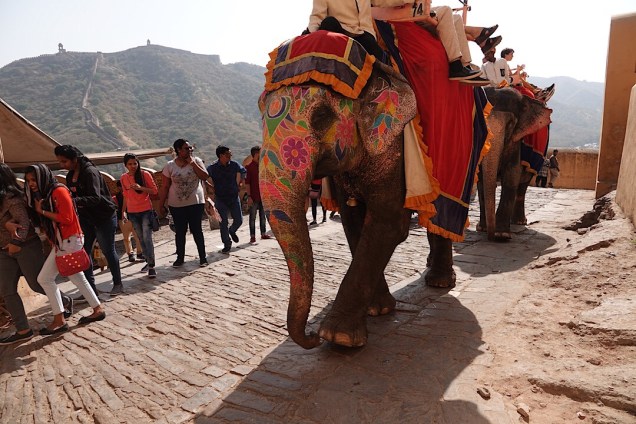 You can ride up the hill to it on an elephant.
You can ride up the hill to it on an elephant.
I thought it was the best fort I’d ever seen until we moved on to Jodhpur, whose Mehrangarh fort compares favorably with anything the CG artists have conjured up for Game of Thrones.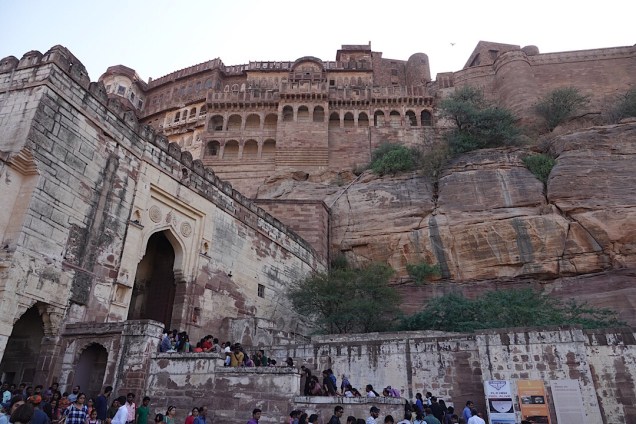
 The spikes in the door were supposed to deter war elephants from battering in the gate.
The spikes in the door were supposed to deter war elephants from battering in the gate.
 One view of the so-called Pleasure Room in the palace within the fort.
One view of the so-called Pleasure Room in the palace within the fort.
 The ceiling in one of the maharajah’s bedrooms.
The ceiling in one of the maharajah’s bedrooms.
I’m pretty sure India has other unbelievably showy forts, but we won’t see them. We’re still in Rajasthan, but this morning we traveled to Pushkar for one of the greatest camel fairs in the world. Steve has forbidden me to bid on any, but it should still be interesting.
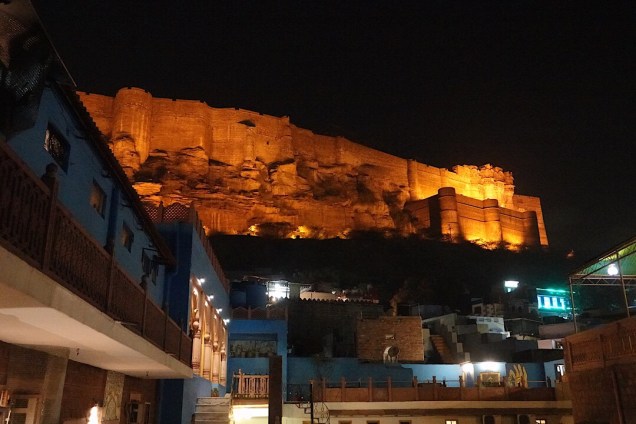 The view of Jodhpur’s Mehrangarh Fort at night, from the little haveli where we stayed.
The view of Jodhpur’s Mehrangarh Fort at night, from the little haveli where we stayed.